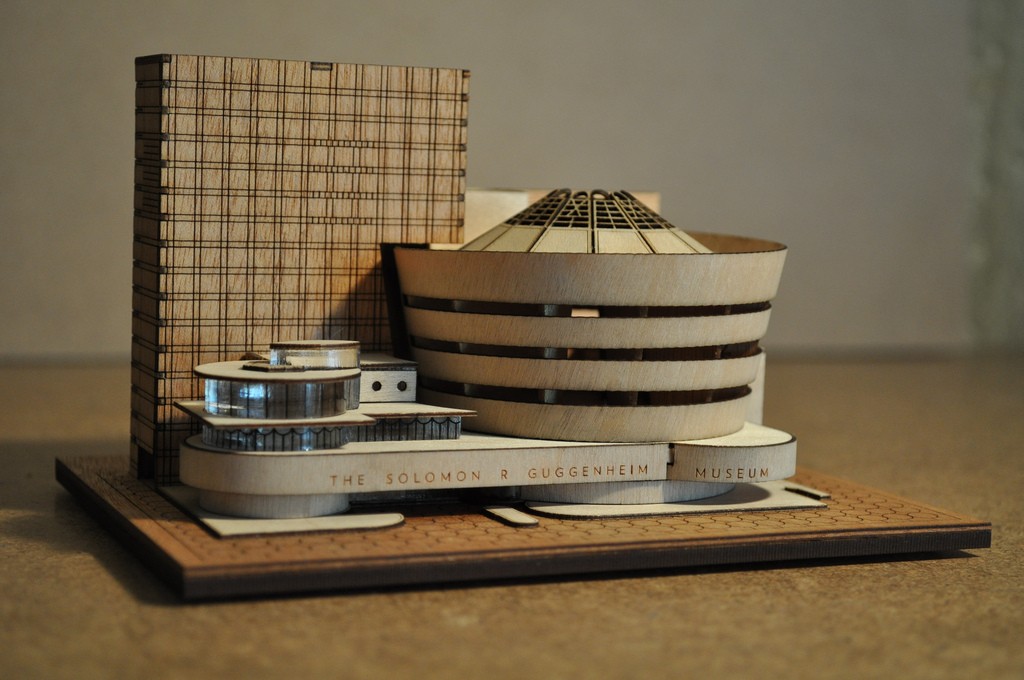by Mariah Bergeron
How does a place acquire the coveted distinction of being an art epicenter? It takes a lot of strategic elements, not most of which involve talent or temperament. We’re going to look at a five-step program that’s pumped out a couple millennia worth of international art hotbeds. For the formula to fit, feel free to arrange the hierarchy of importance of philosophy, religion, economy, and politics to adapt to your particular time and place (e.g.: if you’re Athens, focus on philosophy; Florence, put God up first).
1. Be a refuge.
Art is difficult to make or appreciate when you’re under siege. Athens lost its cultural hold as the cultural empire when the Battle of Actium brought Antony, Cleopatra, and the Hellenistic age to a bitter end. Thousands of highly educated refugees fled the devastation of Greece for hope in the new center of the Holy Roman Empire, where in Florence artists specifically benefitted greatly from religious art works commissioned by the Medici and papal bank reserves. Boom, you’ve got the Renaissance.
If a cultural mecca comes under attack, play the philanthropist and open your loving arms of asylum. After the onslaught of WWI and the threat of WWII encroaching, a majority of the most celebrated artists of the School of Paris fled to safe haven of New York. What happened then? The Modernists mix the NY art kids and, boom, Abstract Expressionism ushers New York City into its reign as art capital.
In a time of other’s strife, open your gates and let the displaced settle in your space — especially if they come from a once-rich metropolis. If you can bill your city as welcoming and safe, you’ll be taking in all those smart enough to escape persecution and death (aka human capital flight aka brain drain). The United States was stellar at boasting about kicking fascist asses in Europe, and how awesome The New Deal was for building a comfortable middle class. America painted itself as heaven, and it worked.
It’s a bonus nowadays if you can also build a reputation on religious and economic freedom — brand your town to appeal to the most diverse population. While the U.S. has never been great at diversity, it’s always been deft at exploiting the cultural heritage of others under the banner of Land of Opportunity.
*Note: Don’t actually be everything to everyone, and don’t be too comfortable. A certain level of strife is necessary to inspire efforts to communicate, invent, and improve. Obstacles like feudalism, debt, religion, racism, and plague are great motivators.
2. Build some new schools and museums.
Now that you’ve got your foreign exchange artists mixing with your own, you’ll want to institutionalize and structure how to validate, proselytize, and canonize the burgeoning new art movements. Sure, you’ve already got some schools and museums, but they’re filled with the teachings and history from the ghosts of epicenters past. Hire teachers that foster new philosophical debate in the classroom that expand past the previous generations’ lingering constructs, creating an atmosphere of development and potentially radical movement (Aristotle, Machiavelli, Hobbes, Alvin Johnson). Kids love radical thought.
Promote programs and exhibitions that contextualize the production of art within your city’s currently poised position, taking into consideration a narrative of slightly rosey-hued history, religious freedoms/constraints, political climate, and a general flavor of art as a means of educating and empowering the the common man (meaning, fill your Uffizi with Jesus, fill your Louvre with battles, fill your Guggenheim with American and Allied avant-garde).
Educational institutions, both public and private, flood the immediate area with intellectual resources and enlightened consumers.1234 A museum demarks a destination, via which they dictate and define successful bastions of art and the desired aesthetic of the wealth classes.
*Note: Remember that the basic job of these institutions is to create a controlled environment for housing doctrines. Teachers and curators are employees, not free agents. Have publicly vague mission statements with privately specific agendas.
3. Get cool.
How to win friends and influence people? Remember that the forefront of culture is harvested from the new ideas developed within the artistic underclass — that’s why you subsidized those new schools and museums. Taut strong characters whose work serves the values of your city (Michelangelo for Catholicism/Humanism, Delacroix for French Revolution/Romanticism, Pollock for Anti-Communism/Abstract Expression) These artists will become celebrities, and celebrities can be the commercial vessels for your city’s influential and economic power.
BC Athens saw the power of and Platonic influence and gave him stages to speak on and historic adoration, leading to schools and libraries that then promoted poetry, architecture, visual art, and becoming the catalyst of modern logic and principles. The Medicis foxed out the most brilliant of artists within earshot of Florence with monetary civic prizes that employed artists in the interest of creating that era’s most beautiful churches and works of both religious and Humanistic art (Michelangelo, Botticelli, Rosselli; the goddamn Renaissance), ushering the western world out of the Dark Ages. Turn-of-the-20th-century Paris stank with bold thinking, willful iconoclasts, and a reputation as the intellectual’s experimental playground (from Impressionism to Surrealism, and everything in between). People flocked. The bleak and hostile New York City of the 1970-80’s mixed the frenetic city dregs of punk and queer culture with the desperate new money of Wall Street, a tryst that conceived an astronomical new echelon of art scene celebrity and consumable status symbols (that no one can stop talking about right now).
With each art capital relocation, the art movements therein became the aesthetic of the greater (mostly Western) world. The word spread about cool new things happening somewhere special under special circumstances, creating a lure and lore of opportunity and enterprise. Increase your limelight through the tourism message that something better is always happening somewhere else, and that somewhere else is your arty city.
*Note: While your art scene has created all kinds of new art and challenging ideas, be sure to cherry-pick the elements that your money will float to the public sphere. You’re curating a scene, not feeding random algal blooms. Revolutionary that go unchecked may revolt in unseemly directions. See 4.
4. Get political.
So you’ve seen how the ideas of your artistic class are, with the right support and steering, able to speak to the masses and influence the basic ideals of a geographically patriotic semblance, meaning, your specific cityfolk. The promotion of these arts and artistic circles has created its own economic market, a nucleus surrounded by circles of art buyers with money. This monied crowd is followed by a system of agendas built by and for the new influx of money: the building of new big houses, nice schools for the kids, fancy clothiers, imported food, etc. Whether it’s a Parthenon for your gods or a Four Seasons Hotel to house your glut of foreign investors, you’ve built quite a little attraction, and amassed a population employed to operate the machinery of progress.
Now it’s time to use this attention to spread your political agenda. You’ve built this epicenter, so you’re going to want to protect it from becoming porous to or exploited by any ol’ outside regime. Align the aesthetic trends that you’ve supported in your city with the power structure that binds the allegiance of the public. Whether it’s the decoration of cathedrals that inspire religious devotion or the installation of corporate sculptures that inspire capitalist pride, these will become the emblems and mascots of your ideals. This is the branding of your politics, whether the artist is on board or not.
*Note: The actual philosophy or politics of the artist do not have to relate whatsoever to the agenda of the state. You’ve commodified the image; it belongs to the cause now.
5. Go to war!
You’ve got culture, money, ideals, and influence. In a word: power. Nice work! You’ve made a place that someone else wants, or wants to destroy.
There will be cities that will covet the riches and control you’ve amassed, desire them for themselves, and believe they deserve to control them. There will be other cities that will associate your politics and religion as threats to their way of life, that your influence will undermine the work that they have done to create the geo-political space that they have carved out for themselves.
The Roman Empire wanted the civic and scientific leaps of Greece, but only under their own Catholic control. France wanted the treasures of the Renaissance, but substitute Catholicism for the separation of church and state.
Whether you’re pulled into a conflict, or you strike the first blow, the pattern seems inevitable that war will be waged. The money once allocated to culture will be rerouted to flow in the direction of military support and strict propaganda. Your artistic resources are going to flee for safer shores, more jobs, better lives. Victory or defeat, you’ll have gutted out the artists — that necessary spark — from the engine of your epicenter, creating a new emigrant wave of invaluable refugees for some new home.
*Note: Be patient — if you can wait out the development of the usurper art epicenter, you’ll have something to try to take over for the future.
So if today New York still reigns as the global art capital, what made that possible was how it benefitted greatly from the already famous Parisian intellectual and artistic refugees of WWI and WWII (Max Ernst, Marc Chagall, Marcel Duchamp, Kay Sage, Piet Mondrian, and many more) influencing the artists of mid-century New York City (Pollock, Rothko, de Kooning, Hoffman, Kline, etc). They brought about the kind of celebrity artist networking with the student class to fill an international culture vacuum and promote a specifically new American wave of art.
Unlike Paris in WWII, however, New York’s conflict is in class warfare, the new fascism of 1% economic suffocation of the working and middle class intellectual voice in that city. This squeeze on the creative class demands a relocating to a new site capable of (and interested in) providing a livable and workable environment. Could Portland, Maine, that salvation?
- American Planning Association, “How the Arts and Culture Sector Catalyzes Economic Vitality”, https://www.planning.org/research/arts/briefingpapers/vitality.htm ↩
- Patricia Harris and David Lyon, “Living with art,” boston.com (August 7, 2011): http://www.boston.com/travel/getaways/europe/articles/2011/08/07/enjoying_the_guggenheim_effect_in_a_transformed_bilbao/ ↩
- Matt Schulman, “The Architecture of Academia: How Universities Affect the Urban Fabric of U.S. Cities,” Architizer (May 11, 2015): http://architizer.com/blog/universities-and-urbanism/ ↩
- Rosemary Scanlon and Catherine Lanier, “Arts as an Industry: Their Economic Impact on New York City and New York State,” Alliance for the Arts (2006): http://cn0.wnet.org/wp-content/uploads/2012/10/ArtsIndustry_2007.pdf ↩


